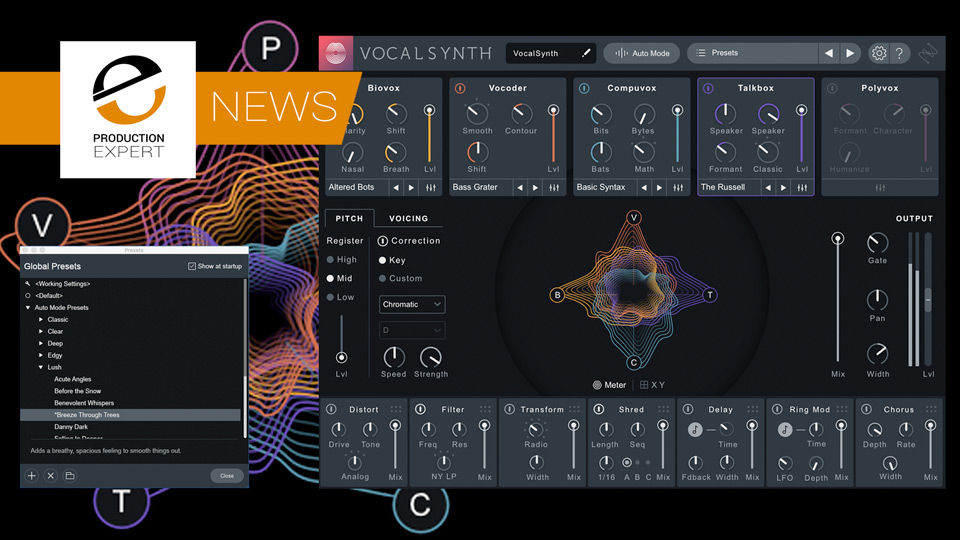

 Stick: Similar to Latch mode, but the effect will lock itself onto the end of the Gesture’s timeline. This is useful for faster performances with different short Gestures. Instant: The Gesture will end instantly when the MIDI note triggering it ends. It’s also helpful for performance if you don’t want the effect to drop out between Gestures. This is useful for playing longer Gestures that change during your arrangement, or syncopated Gestures that you might want to spill over into the next bar. Latch: The Gesture will play and hold until you trigger it again (or trigger another Gesture). This is useful for continuous or repeating effects. Full Gesture: The entire Gesture will play through from start to finish, even if you only tap the note. On Grid: After a MIDI note ends, the Gesture itself waits until the next Grid point (1/8, 1/16 etc.) before ending. There are five Release options to choose from: Use the Release menu to choose the way your Gesture ends. Shorter lengths can impart FM-like textures on a sound, while longer lengths can create smooth and evolving effects.
Stick: Similar to Latch mode, but the effect will lock itself onto the end of the Gesture’s timeline. This is useful for faster performances with different short Gestures. Instant: The Gesture will end instantly when the MIDI note triggering it ends. It’s also helpful for performance if you don’t want the effect to drop out between Gestures. This is useful for playing longer Gestures that change during your arrangement, or syncopated Gestures that you might want to spill over into the next bar. Latch: The Gesture will play and hold until you trigger it again (or trigger another Gesture). This is useful for continuous or repeating effects. Full Gesture: The entire Gesture will play through from start to finish, even if you only tap the note. On Grid: After a MIDI note ends, the Gesture itself waits until the next Grid point (1/8, 1/16 etc.) before ending. There are five Release options to choose from: Use the Release menu to choose the way your Gesture ends. Shorter lengths can impart FM-like textures on a sound, while longer lengths can create smooth and evolving effects. 
You can choose lengths from sixteenth-note triplets to two bars. Use the Length dropdown menu to determine the duration of your Gesture’s cycle.To start, select a Gesture from the Gesture Bank, or use the Default Gesture as your starting point.
IZOTOPE STUTTER EDIT WITH REAPER HOW TO
How to set up a basic Gesture in Stutter Edit 2 Let’s go through the process of setting up a basic Gesture. The Gesture Control Panel has lots of parameters and controls, but never fear, we’re here to walk you through it.







 0 kommentar(er)
0 kommentar(er)
